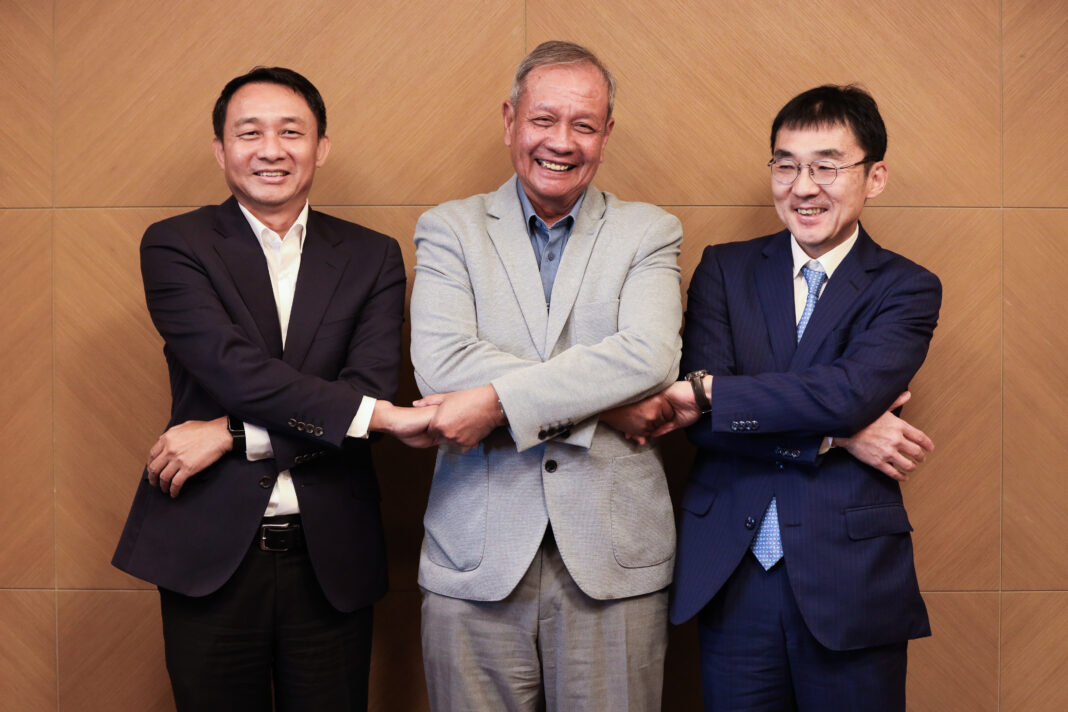Oudet Souvannavong and Bounleuth Luangpaseuth, respectively the president and vice president of the Lao National Chamber of Commerce and Industry (LNCCI), engaged in a dialogue with Tetsuya Watanabe, president of the Economic Research Institute for ASEAN and East Asia (ERIA). The three met on 22 March as part of an ongoing effort to drive renewable energy initiatives and address the evolving energy landscape in the ASEAN region.
The dialogue highlighted Laos’ commitment to decarbonization, energy transitions, and its role in the Asia Zero Emission Community (AZEC).
ERIA’s Role in ASEAN Carbonization Challenges, AZEC Summit Highlights
ERIA is an international organization established in 2008 through an agreement among the leaders of 16 East Asia Summit member countries. The organization plays a vital role in helping to build the ASEAN Economic Community with energy being one of the key pillars of their research activities.
“We are proud to support ASEAN and ASEAN Member States.”
Watanabe: In December 2023, ERIA participated in the AZEC Leaders’ Meeting, where 11 leaders from Asian countries and Australia gathered to discuss the issue of zero emissions in Asia. Sonexay Siphandone, the prime minister of Laos, was also in attendance.
ERIA was invited to establish the Asia Zero Emission Center, whose mission is to chart pathways toward the common goal of net zero emissions. The center serves as a policy research and project platform to assist AZEC partner countries. ERIA is firmly committed to contributing to AZEC, especially in policy-focused areas. We are proud to support ASEAN and ASEAN Member States in this way.
Can you summarize Laos’ roles and challenges in ASEAN decarbonization and its commitment to the AZEC?
“Despite being a small country within ASEAN, Laos has substantial potential for green growth.”
Oudet: Laos affirmed the AZEC Leaders Joint Statement in Tokyo, committing to AZEC. This marks a significant further step for the country, which already has a long history of producing green energy through hydropower.
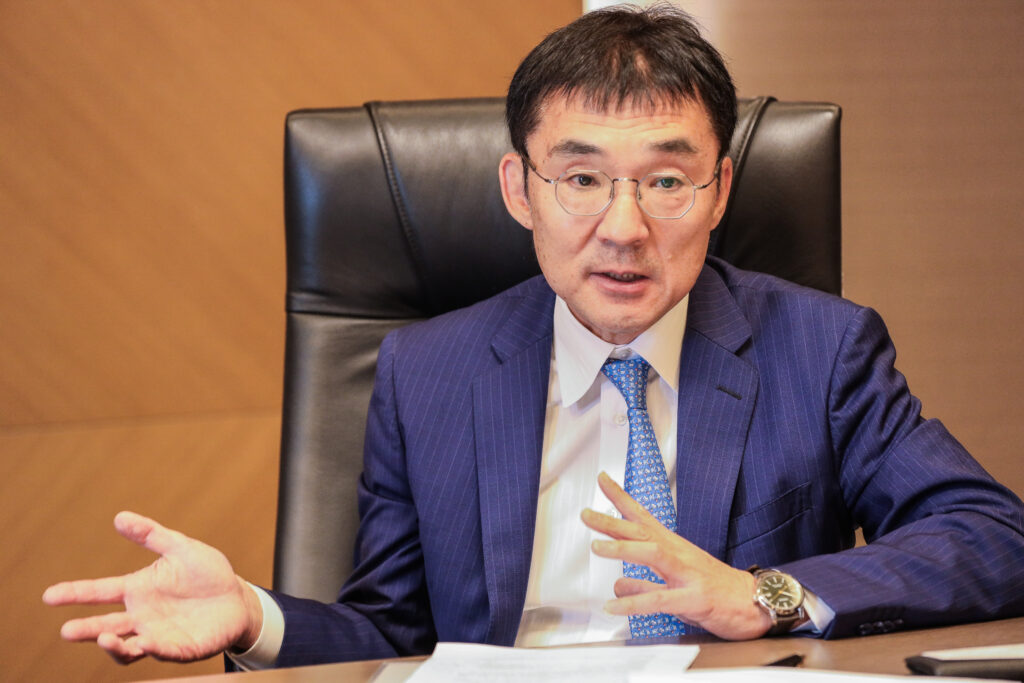
Laos plans to deliver more than 25,000 megawatts of hydropower. In addition, the Lao government is promoting further development of other types of renewable energy, such as solar and wind power. As well as its role in green power generation, Laos has forests that cover 47 percent of the country. These forests play a significant role in maintaining water resources, and they also serve as a valuable carbon sink. These natural blessings give Laos substantial potential for green growth, despite being a small country within ASEAN.
Bounleuth: So far, we have focused on hydropower—small-, medium- and large-scale. Over the past decade, local investors have spearheaded development in Laos, especially in hydropower. They have been exploring alternative options, too, such as integrating solar energy with hydropower. This approach would capitalize on Laos’ abundance of reservoirs, enabling effective management of water resources across seasons, alongside the emergence of wind power.
Nam Ngum 1 Hydropower Plant (Credit: Electricité du Laos EDL Generation Public Company)
I am convinced that the sustained support and encouragement of green power development is the right path for future economic growth. This approach serves two objectives: we can export electricity to neighboring countries, while at the same time fostering the growth of various industries within Laos that utilize green power.
What are the challenges to decarbonization in the ASEAN region?
Watanabe: Achieving net zero emissions is a goal for every country in the world. That being said, the situation varies significantly in different parts of the world, such as Asia, Europe, and the United States. The biggest challenge is to ensure balance—achieving energy security and economic growth while simultaneously navigating the pathway to net zero emissions.
The situation varies significantly even within the ASEAN region. Take Indonesia for example. Out of necessity, they heavily rely on fossil fuels, so the challenge for them is to reduce carbon emissions while continuing to incorporate fossil fuels to some extent.
In Laos, the situation is quite different, as the country can rely on hydropower and utilize nature-based solutions. Because of these differences, it is essential to find solutions that recognize various pathways to achieve our common goals.
Could you provide more details on specific renewable energy initiatives in Laos, especially those with significant potential for decarbonization?
“Laos serves as an excellent model for the future of fuel.”
Oudet: We have numerous proposals for solar farms across the country, including large projects by Electricité du Laos (EDL). These initiatives are far-reaching and cover both the north and the sunnier south.
At the same time, Laos faces a number of challenges. For one, the lack of concrete legislation has deterred some potential investors. I also chair the Lao National Assembly of Commerce, which is concerned about energy security, especially as Laos haven’t established an energy security policy. This situation needs to be managed properly, and a full transition from traditional fuel sources and fossil energy to renewable energy will take time.
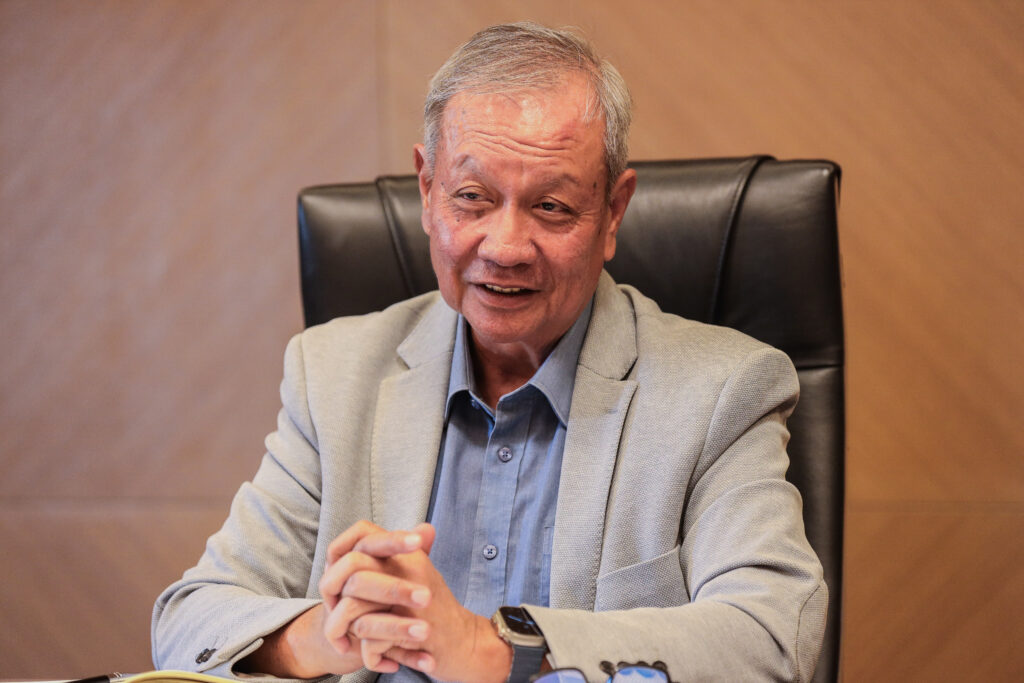
Bonleuth: Laos has signed an MOU with a Japanese company from the Ajinomoto Group to introduce technology for developing green ammonia. The project aims to use this ammonia to produce green fertilizer for local farming as well as for export to Thailand.

I think this project is a good first initiative. Once this project gets off the ground, it will serve as a case study for developing green ammonia and fertilizer. As Laos is a small country, this project will have an outsized impact. Using green power for industry, agriculture, or even tourism will create a positive image that Laos can leverage.
Due to the high cost of financing in Laos, development in cooperation with foreign investors may be faster than relying solely on local businessmen or investors. To expedite the process further, we might also seek support through matching grants or soft loans from other countries. For these reasons, we believe this project holds promise for the development of Laos’ green power sector.
Watanabe: This year, Laos will host the ASEAN summit. On the sidelines of the summit, Souvannavong, the chairman of LNCCI, will host a business meeting. This presents a significant opportunity for Laos to showcase its potential not only within the ASEAN region but also to Japan, Australia, and other countries. The summit should thus help investors and businesses recognize the significant potential for cooperation with policymakers and local companies.
ERIA is working closely with Souvannavong to promote this aspect of Laos. Laos serves as an excellent model for the future of fuel.
What’s the current status of carbon credits in Laos, particularly in terms of international cooperation?
Oudet: Laos has been selling carbon credits for a number of years. One challenge that we face in doing so is that the standard requirements for carbon are high, and the standards vary by region. For instance, the requirements for Europe differ from those of other countries.
The ASEAN Business Advisory Council (ASEAN BAC) is currently developing a common ASEAN standard for carbon. This standard will enable ASEAN Member States to sell carbon at consistent rates, facilitating carbon negotiations with other countries. I believe Laos can even sell carbon credits to other ASEAN Members States; Singapore has already initiated negotiations to purchase carbon credits, as has Japan.
Bounleuth: For carbon credits, we have already signed an MOU and engaged consultants to prepare the necessary documentation, which is substantial. The requirements can be daunting, so collaborating with international consultants can expedite the process.
Watanabe: A common ASEAN-wide approach is very important for carbon requirements and verification methods. ERIA’s focus on carbon trading involves bringing together diverse experiences and knowledge. We combine ASEAN regional and international practices to harness the potential for carbon trading in Laos and the rest of the ASEAN region. Carbon credits are a touchstone issue, as the involve standards from other parts of the world and require a common approach from the ASEAN region.
What is the vision for decarbonization in Laos and the rest of the ASEAN region? Can you summarize their respective energy policies?
“It is essential to showcase pathways for green development in the region.”
Watanabe: As Laos assumes its ASEAN chairmanship, it is essential to showcase pathways for green development in the region.
Many national governments and private-sector entities outside the ASEAN region are closely observing the region’s green energy transition and progress toward a green economy. They are monitoring ASEAN as a growth center of the global economy. They are interested in seeing how ASEAN, under Laos’ chairmanship this year, will provide solutions for the green economy, in terms of both technology-led and nature-based approaches.
In response, the region needs to take an integrated approach to energy, sustainability, nature, and environmental matters, particularly in safeguarding the economy and society. I believe that if Laos’ chairmanship delivers positive messages and innovative ideas, it will leave a significant legacy for the ASEAN region.
Oudet: Laos has significant potential for development as a green economy. If we can overcome the challenges inherent in the energy transition and green development, then I believe Laos will emerge as one of the ASEAN region’s leading green-growth economies. We can establish a common policy and agenda for green growth, fostering relationships and mutual support.
Bounleuth: We need to implement pilot projects in Laos to showcase activities the country aims to promote. Presenting a practical case study to the government garners more support than just presenting theoretical ideas. We aim to establish Laos-specific models for green energy public-private partnership (PPP) and the green economy.
Can you tell us about the role and vision of AZEC and the AZEC Advocacy Group in terms of PPPs and policy knowledge-sharing within the ASEAN region?
Watanabe: As we discussed, it is important to showcase and facilitate specific projects in Laos. AZEC and the AZEC Advocacy Group can facilitate such projects. By collaborating on specific initiatives and showcasing models for green economy and green finance.
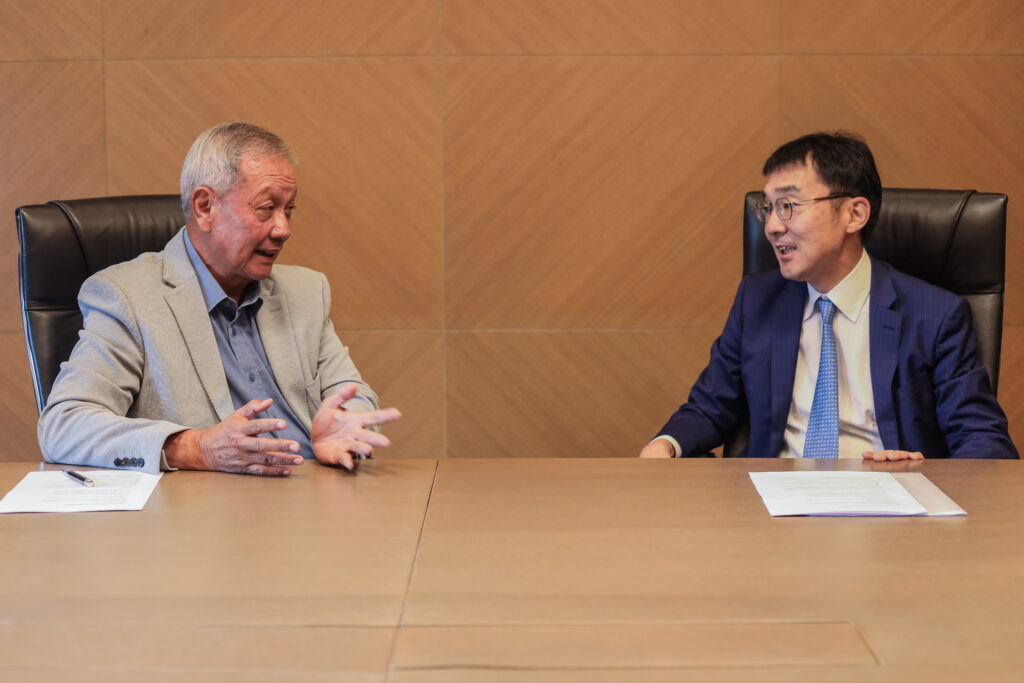
Oudet: We have two MOUs in place for the ASEAN BAC. One is a specific agreement with ERIA, and the other is for the implementation of AZEC, which also involves a Japanese business association.
Regarding AZEC, I believe the implementation involves a leading Japanese company with high technology networking with industries in ASEAN, including Laos. We hope that technology transfer or application will occur with the AZEC element. Our focus isn’t only on ASEAN but on all of Asia. This approach will bring many models for us to replicate in Laos. That is what we hope will happen.
To conclude, could we discuss expectations from Laos, ERIA, and AZEC? We would also like to talk about future collaboration, as well as expectations for working with Laos and ASEAN BAC?
Watanabe: Bounleuth mentioned using PPP model to achieve a green economy. Such a result from Laos’ ASEAN chairmanship would have a significant impact, in my opinion. So, we are working on that.
Oudet: My expectation for ASEAN and Laos is that during the chairmanship from now until next year with Malaysia, we should focus on expanding B2B networking in the green economy and related issues. We need to start implementing this in Laos, leveraging the models mentioned above and with the assistance of ERIA and the agreements we have signed in Tokyo.
Bounleuth: As Laos assumes the chairmanship of ASEAN, I would like to take this opportunity to further promote B2B networks to establish the Laos model, as I mentioned earlier. This entails initiating more pilot projects, which can help identify future champions.
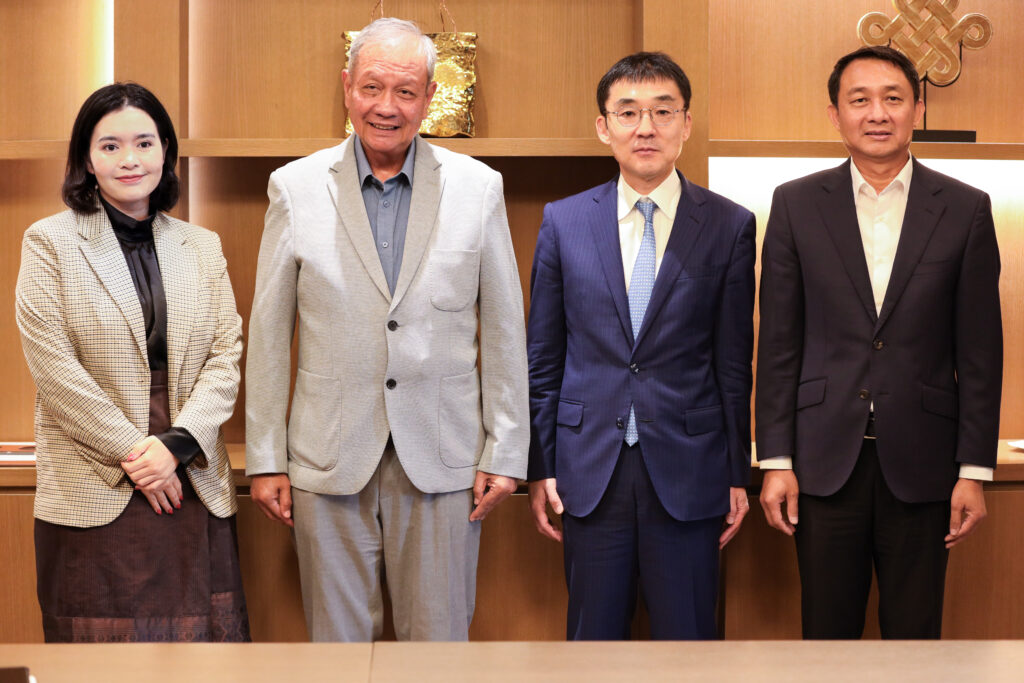
[Interlocutor Profiles]
Tetsuya Watanabe
President, ERIA
Profile: Watanabe’s career includes key positions in the Japanese government, and he was appointed as the president of ERIA in 2023.
Oudet Souvannavong
President of the Lao National Chamber of Commerce and Industry (LNCCI)
Profile: Souvannavong is also a member of the Prime Minister Economic Advisory Board in Laos and a founding member of the ASEAN Business Advisory Council (ASEAN-BAC). He serves as ASEAN-BAC Chairman in 2024, as well as in 2016 and 2004.
Bounleuth Luangpaseuth
Vice president of the Lao National Chamber of Commerce and Industry (LNCCI)
Valy Phommachak (Facilitator)
Co-founder of Econox Laos, she is also an ecologist and environmental journalist.


